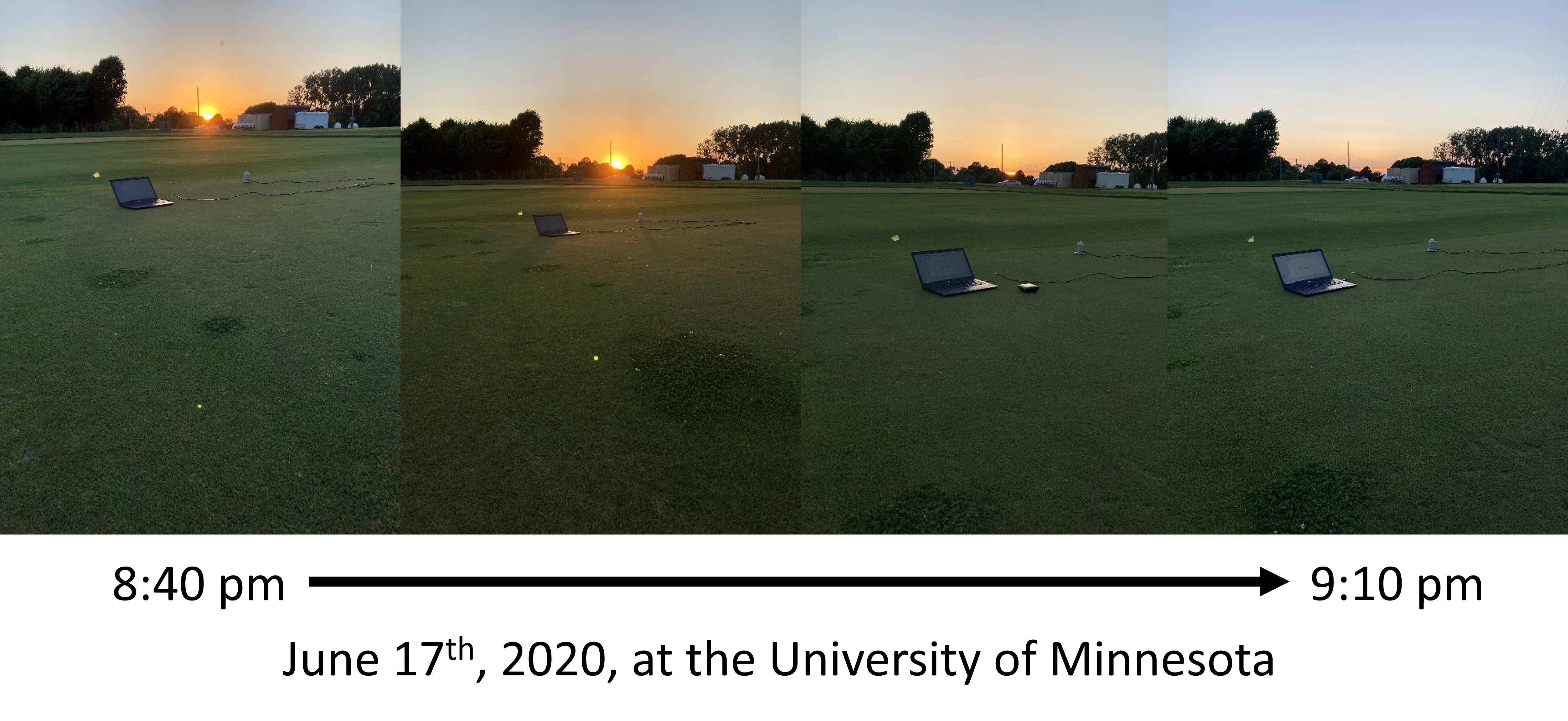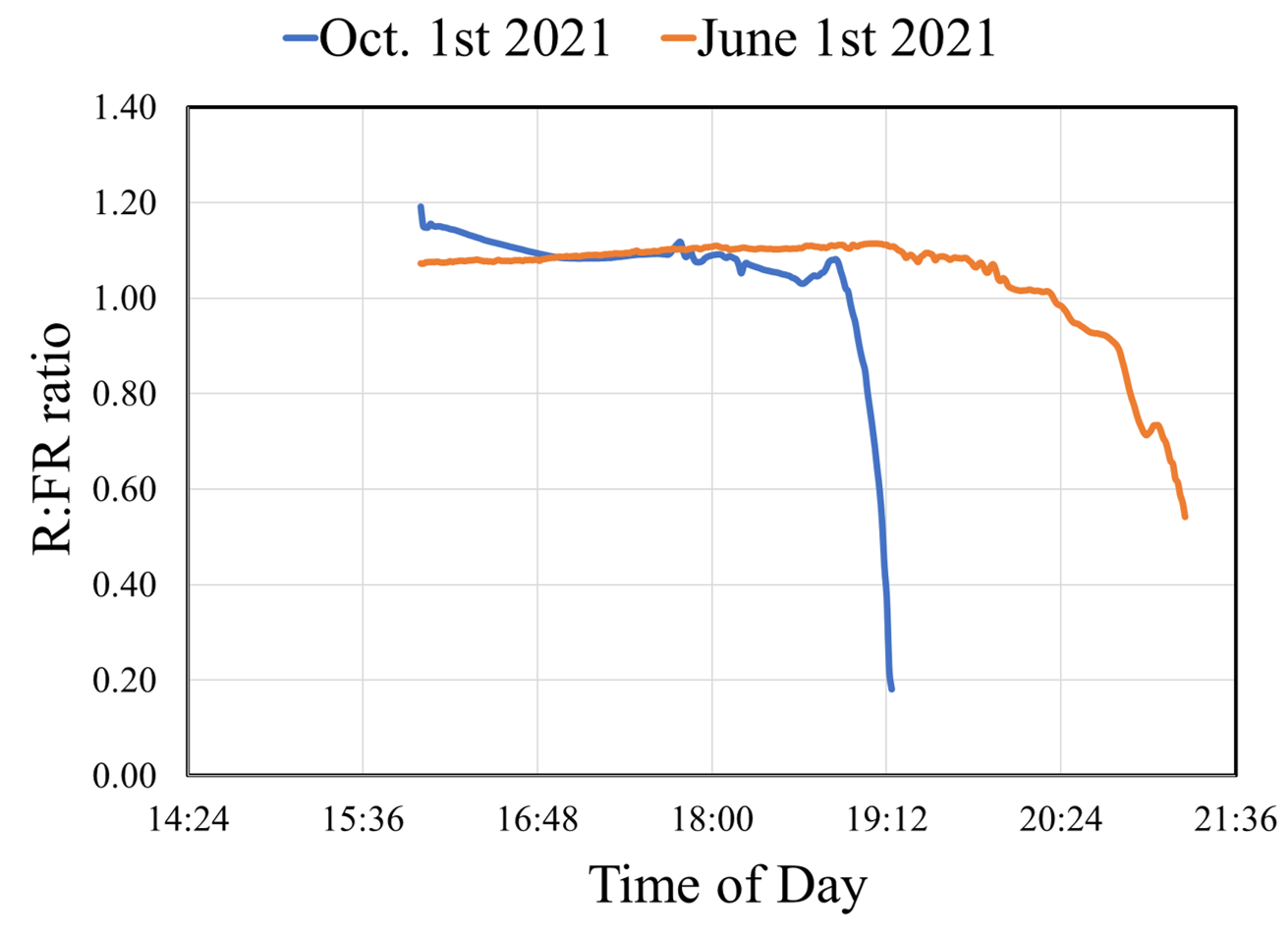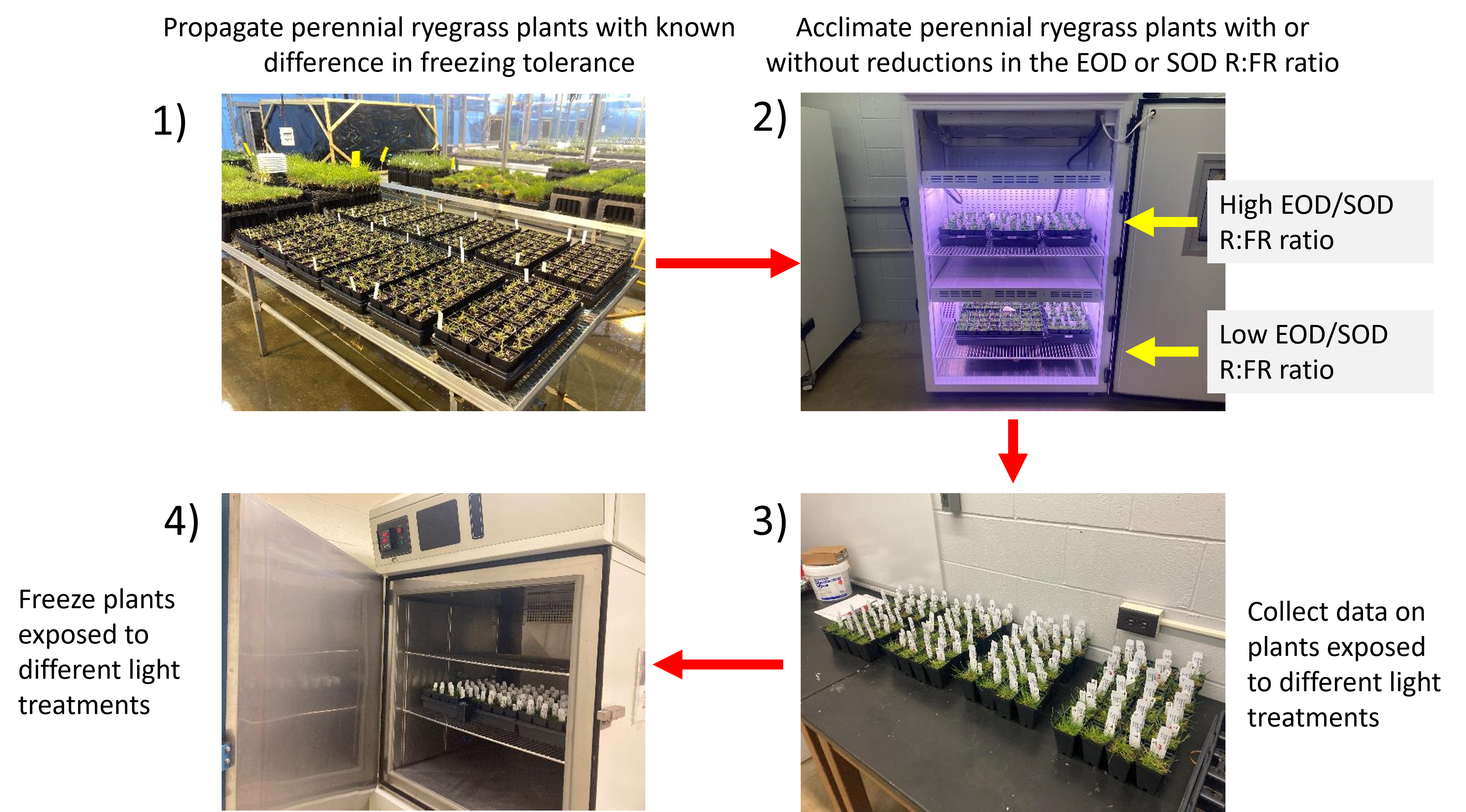By Dominic Petrella, Ohio State University
It is well known that plants and turfgrasses acclimate to winter during the fall months due to temperature cues and reductions in the length of time the sun is up, also called the photoperiod. The reduction in photoperiod and air temperature together act as signals to the plants to undergo physiological changes that prepare them for winter and overall freezing temperatures that would otherwise be lethal (Huang et al., 2014). However, with climate change leading to unpredictable weather in the autumn, there are increasing chances that turfgrasses may not be exposed to the low temperatures required to gain full tolerance to freezing events. With that, we need to better understand other potential mechanisms in which turfgrasses may perceive the oncoming winter months and use this information to breed cultivars that may acclimate to freezing temperatures with reduced reliance on exposure to low temperatures in the autumn.
One potential mechanism that may strengthen the plants’ ability to recognize changing seasons is alterations in the quality of light that occurs in the morning and in the evening. These are together called end-of-day (EOD) and start-of-day (SOD) responses. In the evening and in the morning, when the sun is low in the sky (less than 10° above the horizon), there are reductions in the ratio of red to far-red light (R:FR; Franklin and Whitelam, 2007). We often see this change of light quality in the morning and evening as red and orange skies (Figure 1). The R:FR ratio is well known for its impact on plant growth and development and may also play a role in recognizing change in season (see What role does far-red light play when light intensity is high? for a refresher on R:FR light ).

The R:FR ratio is lower in both morning and in the evening throughout the year, but as the photoperiod gets shorter in the autumn, the time of day during which the R:FR ratio is reduced comes earlier in evening or later in the morning (Figure 2). The shift in time in which the plants are exposed to the reduced R:FR may be an added cue that helps indicate the time of year to the plant. This may strengthen photoperiod recognition, or potentially be an alternative signal for the plant to acclimate for winter before temperatures decrease.

It is well known that reductions in the R:FR ratio at the EOD and SOD affect plant growth and development (Kasperbauer, 1971; Kasperbauer and Peaslee, 1973). This is linked to the idea that this reduction in light quality is the last thing “seen” by the plant prior to darkness, and results in numerous changes in plant physiology. Greenhouse researchers have used the idea of alterations in EOD and SOD light quality to influence growth and yield, reducing the R:FR ratio in the evening beyond what happens normally in the field (Chia and Kubota, 2010). Researchers have also shown that a low R:FR at the end of the day speeds up bud burst in silver birch (Linkosalo and Lechowicz, 2006), and that a low R:FR has been shown to increase freezing tolerance in Arabidopsis (Franklin and Whitelam 2007).
As part of the WinterTurf grant, we are examining if a reduction in the R:FR ratio at the EOD and SOD influences freezing tolerance. When evaluating turfgrass plants for freezing tolerance in the past, the R:FR ratio at the EOD and SOD were always kept very high, well above what happens in the real world. There may be turfgrass plants that utilize the EOD and SOD signals to recognize the time of the year, but the methods currently used to evaluate freezing tolerance would not allow for discovering this. Our first approach to this is through an experiment evaluating perennial ryegrass plants that are acclimated to low temperatures with or without reductions in the R:FR ratio during both the EOD and SOD (Figure 3).

Following the acclimation period, we will be placing plants in a programmable freezer and examining their tolerance to -9, -12, -15, and -18°C to see if the EOD and SOD light treatments influence tolerance to lethal temperatures. How will we use this information? If the reduction in the R:FR ratio at the EOD and SOD increase freezing tolerance, then we may be able to develop cultivars that take advantage of this by better preparing for winter conditions through greater recognition of the time of year through sensing changes in the R:FR ratio at the EOD and SOD. We may also have a better understanding of how cloud cover in the autumn months influence acclimation to winter, as cloud cover will impact changes in the EOD and SOD R:FR ratio.
References
Huang, B., M. DaCosta and Y. Jiang. 2014. Research advances in mechanisms of turfgrass tolerance to abiotic stresses: from physiology to molecular Biology. Critical Reviews in Plant Sciences, 33:2-3, 141-189, DOI: 10.1080/07352689.2014.870411
Franklin, K.A., and G.C. Whitelam. 2007. Light-quality regulation of freezing tolerance in Arabidopsis thaliana. Nat. Genet. 39(11):1410-3. doi: 10.1038/ng.2007.3.
Kasperbauer, M.J. 1971. Spectral distribution of light in a tobacco canopy and effects of end-of-day light quality on growth and development. Plant Physiology (47), 775-778. doi: 10.1104/pp.47.6.775